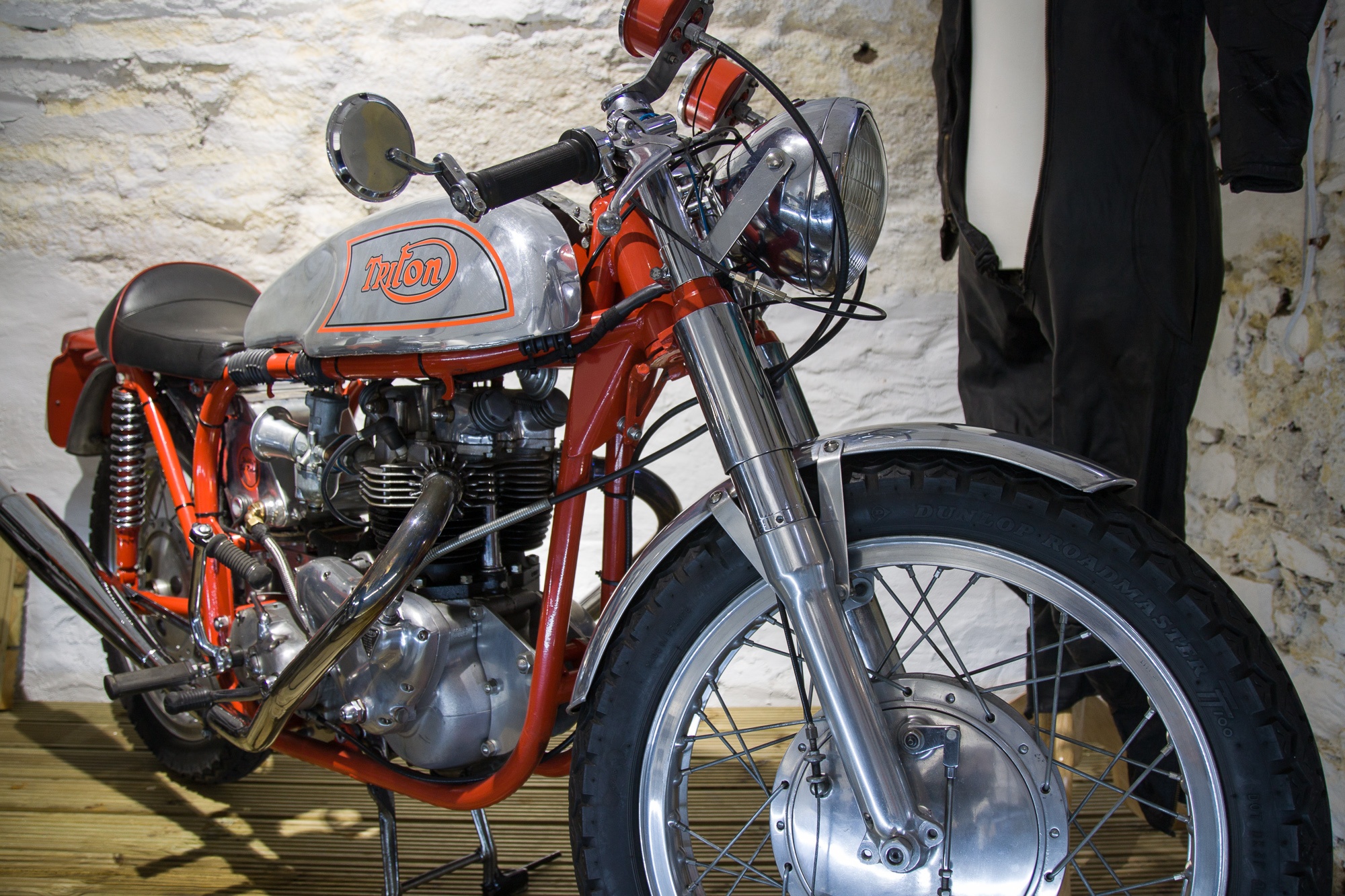Triton motorcycles were not factory models but were hybrid bikes. Many were privately constructed but some London dealers offered complete bikes. The builders fitted Triumph engines into Norton frames, and the aim was to combine the best elements of each marque and thus gain a bike superior to either. Many Tritons were configured as café racers with single-seats. The name ‘Triton’ is a contraction of Triumph and Norton; and ‘Triton’ was the name of a mythological Greek God.
The Norton Featherbed frame was regarded as the best handling item of the day and the Triton rationale was to combine the “best engine” with the “best frame” by replacing the standard Norton engine with Triumph parallel-twin engine. A popular engine choice was the Triumph Bonneville unit with twin carburettors and twin camshafts. The Norton 650 and 750 vertical twin engines had a reliability problem. At about 7000 rpm the piston exceeds the engineering limit for piston speed, so over-revving soon destroys the engines.
Tritons with a pre-unit Triumph motor sometimes retained the post-1960 Norton AMC gearbox, which was thought superior to the equivalent Triumph gearbox. A Quaife five speed gearbox was sometimes used. More modern Tritons use a Triumph unit construction twin in a featherbed frame.
Several motorcycle dealers made equipment for Triton conversions; some would do the complete job for customers while others sold complete Tritons. The most important part required are the engines mounting plates and several different designs exist that can affect the engine placement and therefore the handling. The lower the engine is mounted the better the handling achieved from the Norton frame.
